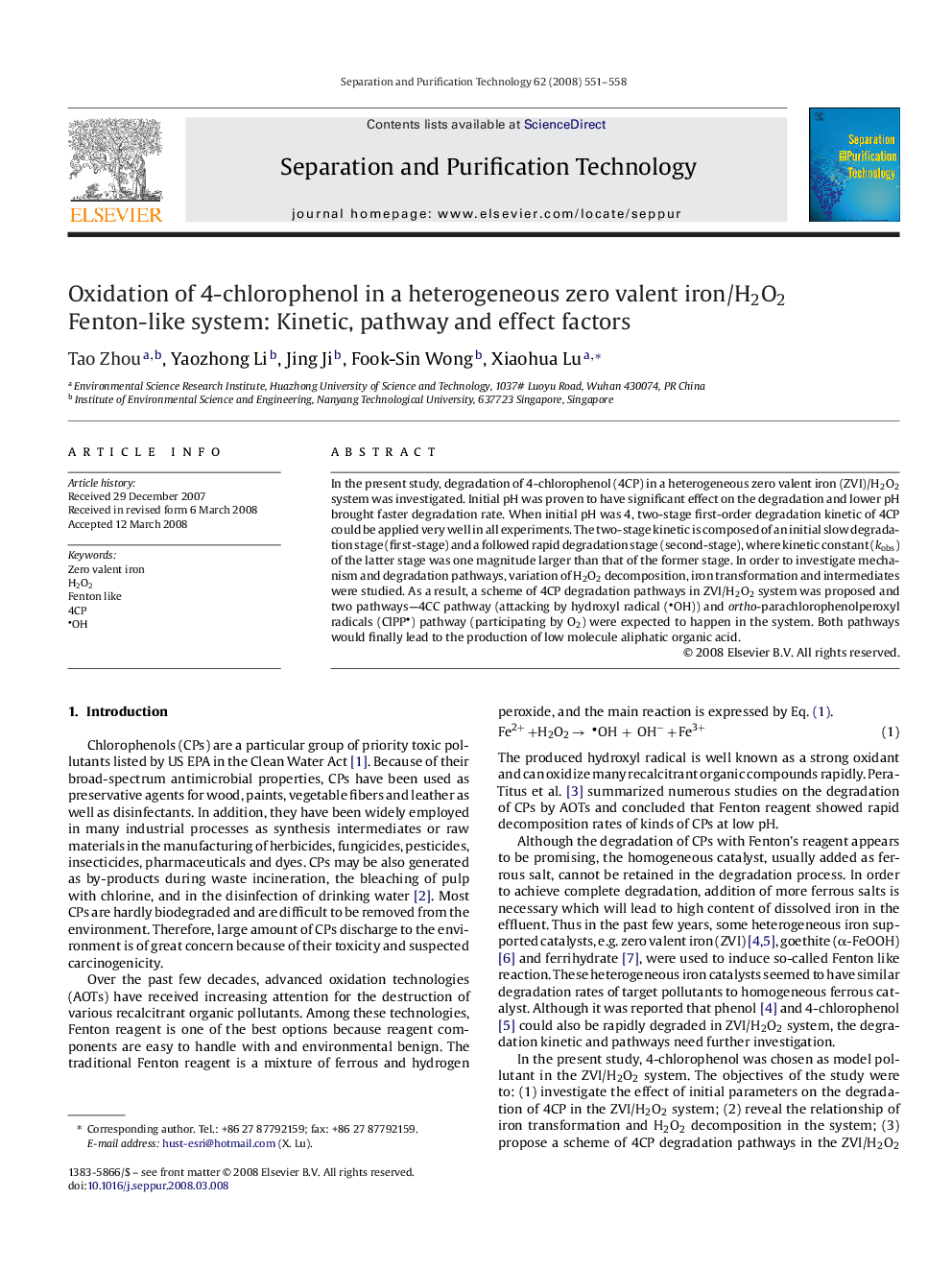| Article ID | Journal | Published Year | Pages | File Type |
|---|---|---|---|---|
| 643559 | Separation and Purification Technology | 2008 | 8 Pages |
In the present study, degradation of 4-chlorophenol (4CP) in a heterogeneous zero valent iron (ZVI)/H2O2 system was investigated. Initial pH was proven to have significant effect on the degradation and lower pH brought faster degradation rate. When initial pH was 4, two-stage first-order degradation kinetic of 4CP could be applied very well in all experiments. The two-stage kinetic is composed of an initial slow degradation stage (first-stage) and a followed rapid degradation stage (second-stage), where kinetic constant (kobs) of the latter stage was one magnitude larger than that of the former stage. In order to investigate mechanism and degradation pathways, variation of H2O2 decomposition, iron transformation and intermediates were studied. As a result, a scheme of 4CP degradation pathways in ZVI/H2O2 system was proposed and two pathways—4CC pathway (attacking by hydroxyl radical (OH)) and ortho-parachlorophenolperoxyl radicals (ClPP) pathway (participating by O2) were expected to happen in the system. Both pathways would finally lead to the production of low molecule aliphatic organic acid.
